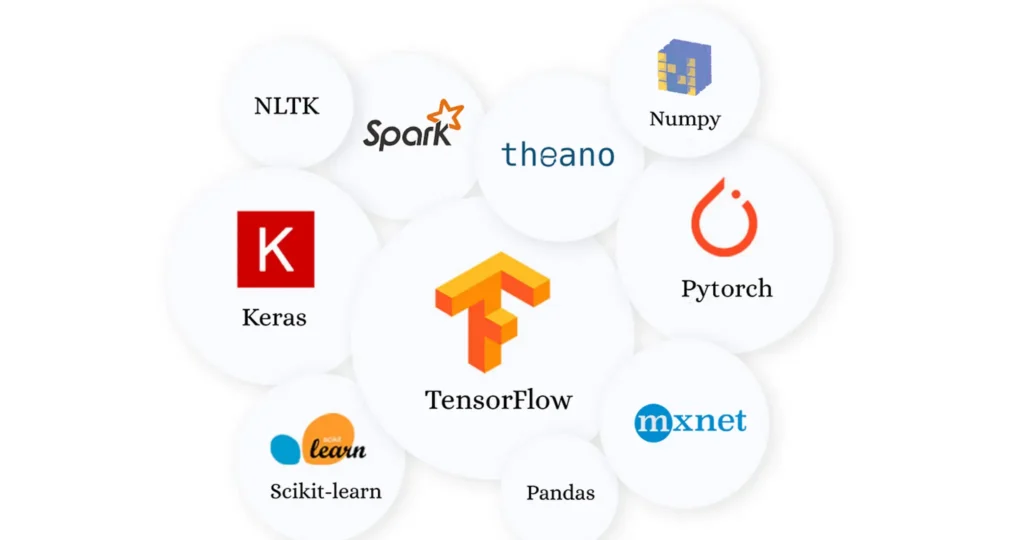The Top 10 Machine Learning Frameworks to Watch in 2024
Machine Learning (ML) is undeniably at the forefront of technological advancement, empowering systems to learn from data and adapt with minimal human intervention. Over the last four years, there has been a remarkable 250% increase in the adoption of machine learning technologies among organizations, highlighting its transformative potential across various sectors.
What Are Machine Learning Frameworks?
In the landscape of ML, frameworks play a pivotal role in facilitating the development of sophisticated models. These frameworks offer a suite of tools, libraries, and resources, allowing developers to create tailored models efficiently. In this article, we’ll examine the leading machine learning frameworks that developers should prioritize in 2024.
Understanding Machine Learning
At its core, Machine Learning is a subset of artificial intelligence (AI) focused on the development of algorithms that enable systems to learn from and make predictions based on data. Unlike traditional programming, which relies on explicit instructions for every task, ML systems dynamically analyze data, recognize patterns, and improve over time. This technology underpins a variety of applications, from voice recognition and image analysis to predictive analytics.
Leading Machine Learning Frameworks for 2024
As Machine Learning becomes increasingly complex, utilizing the right frameworks is essential for effective development. Mastering these tools enhances efficiency and accelerates the model-building process. Here are the top ML frameworks you’ll want to explore this year:
-
TensorFlow
Created by Google Brain, TensorFlow is an open-source platform that provides a diverse set of tools, libraries, and resources for ML. Its adaptable architecture suits both novices and seasoned professionals, and it enables model deployment across various environments including cloud and mobile platforms. -
Theano
This foundational Python library specializes in defining and optimizing mathematical expressions, particularly those tied to multidimensional data. Developed by the Montreal Institute for Learning Algorithms (MILA), Theano works seamlessly with NumPy while allowing for efficient computation on CPUs and GPUs. -
Scikit-learn
A favorite among Python developers, Scikit-learn simplifies the implementation of diverse ML models such as classification, regression, and clustering. Built on libraries like NumPy and Matplotlib, it offers excellent compatibility and usability for ML practitioners. -
Caffe
Standing for Convolutional Architecture for Fast Feature Embedding, Caffe is a deep learning framework recognized for its speed and modular architecture, making it ideal for image classification tasks. Developed at the Berkeley Vision and Learning Center, it efficiently harnesses both CPU and GPU power. -
Apache Mahout
Tailored for the creation of scalable machine learning algorithms, Apache Mahout excels in clustering, classification, and collaborative filtering. Initially built on Apache Hadoop, it now pivots towards Apache Spark for improved performance in data science applications. -
Apache Spark
This open-source cluster-computing framework provides programming interfaces that facilitate large-scale data processing. Its core features allow it to operate seamlessly across various cluster management systems, making it suitable for big data applications. -
PyTorch
Gaining popularity for its dynamic computation graph, PyTorch is a successor to the Torch library and is widely used in deep learning projects. Developed by Facebook’s AI Research lab, it offers tools that improve model interpretability and support graph-based learning. -
Amazon SageMaker
As a fully integrated ML development environment provided by Amazon Web Services (AWS), SageMaker includes powerful tools for building, training, and deploying models, with easy integration into the wider AWS ecosystem. -
Accord.NET
This comprehensive framework is designed for .NET developers and provides an extensive library for statistical analysis, pattern recognition, and image processing, making it a powerful choice within the Microsoft ecosystem. - Microsoft Cognitive Toolkit (CNTK)
Developed by Microsoft Research, CNTK excels at efficiently training complex models, including deep neural networks. It supports parallel processing across multiple GPUs and servers, making it a strong choice for large-scale applications.
Key Considerations When Choosing a Framework
- Project Requirements: Determine which framework aligns with your specific project needs, including the type and complexity of the data and desired model characteristics.
- Compatibility: Check that the chosen framework integrates well with other tools and libraries you plan to use.
- Performance: Assess the framework’s performance, particularly if your project involves extensive data processing or calls for real-time insights.
Conclusion
The field of Machine Learning is rapidly evolving and making significant inroads across multiple industries. The frameworks highlighted in this article equip developers with the necessary tools to craft advanced ML models efficiently. By staying updated on the latest advancements in these technologies, developers can enhance their skills and contribute meaningfully to the future of AI.
FAQs
What are the leading Machine Learning frameworks?
The foremost frameworks include TensorFlow, Theano, Scikit-learn, Caffe, Apache Mahout, Apache Spark, PyTorch, Amazon SageMaker, Accord.NET, and Microsoft Cognitive Toolkit (CNTK).
What is the role of Machine Learning frameworks?
Machine Learning frameworks serve as software tools that simplify the model development process, providing the libraries and APIs needed for tasks such as data preprocessing and model creation.
Why should I invest time in learning Machine Learning frameworks?
Understanding these frameworks is vital for easing complex tasks, accelerating development timelines, and constructing efficient, scalable ML models.




